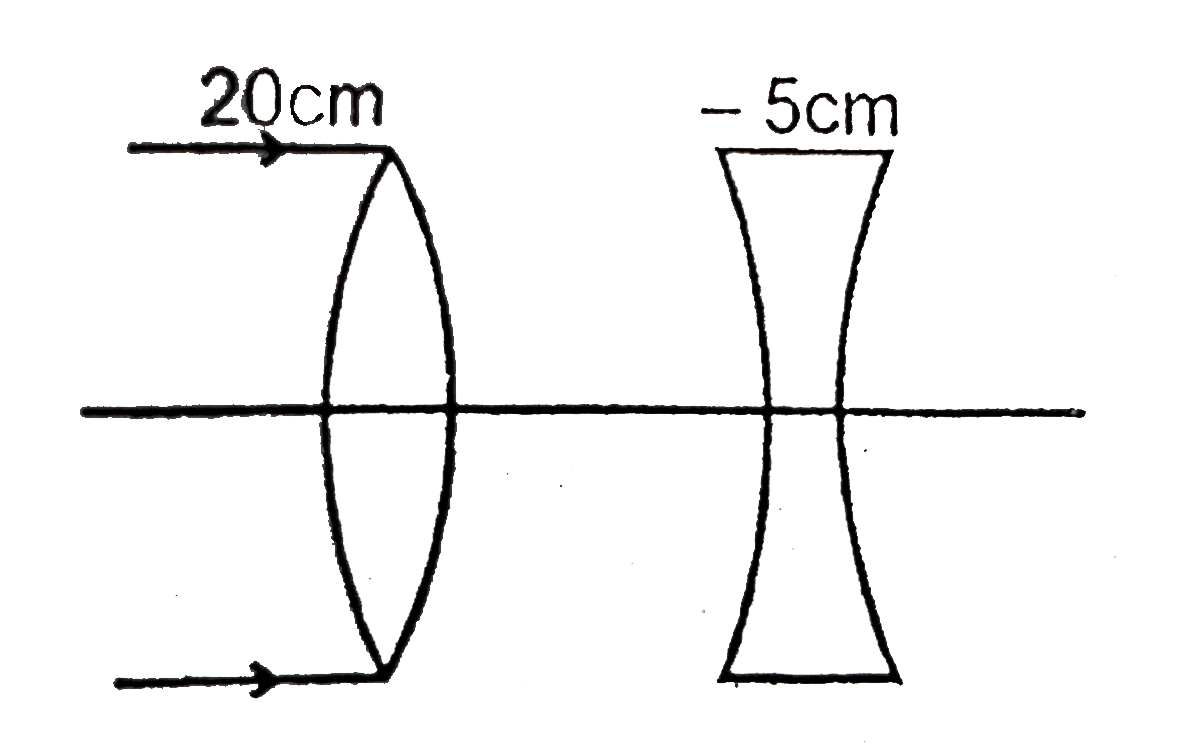The focal length ofa converging lens are fvandfr for violet and red light respectively.
a.fv>fr
b.fv=fr
c.fv<fr
d.Any of the three is possible depending on the value of the average refractive index μ.
The correct Answer is:C
Step by step video & image solution for The focal length ofa converging lens are f_v and f_r for violet and red light respectively. by Physics experts to help you in doubts & scoring excellent marks in Class 12 exams.
Updated on:21/07/2023Topper's Solved these Questions
- DISPERSION AND SPECTRABOOK - HC VERMA ENGLISHCHAPTER - DISPERSION AND SPECTRAEXERCISE - Objective -2
5 Videos
- DISPERSION AND SPECTRABOOK - HC VERMA ENGLISHCHAPTER - DISPERSION AND SPECTRAEXERCISE - Exercises
11 Videos
- DISPERSION AND SPECTRABOOK - HC VERMA ENGLISHCHAPTER - DISPERSION AND SPECTRAEXERCISE - Worked out Examples
3 Videos
- CAPACITORSBOOK - HC VERMA ENGLISHCHAPTER - CAPACITORSEXERCISE - short answer
7 Videos
- ELECTRIC CURRENT IN CONDUCTORSBOOK - HC VERMA ENGLISHCHAPTER - ELECTRIC CURRENT IN CONDUCTORSEXERCISE - questions for short answer
17 Videos
Similar Questions
The focal length of a converting lens are fvandfr for violet and red lights, respectively. Which of the following is correct?
View SolutionIf f(V) and fR are the focal lengths of a convex lens for violet and red light respectively and FVand FR are the focal lengths of concave lens for violet and red light respectively, then we have
View SolutionThe focal lengths of a converging lens measured for violet, green and red colours of fv'fG'fR respectively. We will find
(A). fR>fG>fV (B). fv<fR<fG
(C). fV>fR>fG (D). fV=fR=fG
View SolutionThe focal lengths of a thin lens for red and violet light are 90.0 cm and 86.4cm respectively. Find the dispersive power of the material of the lens. Make appropriate assumptions.
View SolutionChoose the correct alternative corresponding to the object distance 'u', image distance 'v' and the focal length 'F' of a converging lens from the following .
(i) The average speed of the image as the object moves with the uniform speed from distance 3F4 to F2 is greater than the average speed of the image as the object moves with same speed from distance F2toF4
(ii) The minimum distance between a real object and its real image in case of a converging lens is 4F where F is its focal length.
View SolutionThe focal lengths of a convex lens for red, yellow and violet rays are 100 cm, 98 cm and 96 cm respectively. Find the dispersive power of the material of the lens.
View SolutionAn object is placed 12cm to the left of a converging lens of focal length 8cm. Another converging lens of 6cm focal lengh is placed at a distance of 30cm to the right of the first lens. The second lens will produce
View SolutionThe focal length of a convex lens of R.I.1.5 is f when it is placed in air. When it is immersed in a liquid is behaves as a converging lens its focal length becomes xf(x>1). The refractive index of the liquid
View SolutionWill the focal length of a lens for red light be more, same or less than that for blue light ?
View SolutionIn the figure shown a converging lens and a diverging lens of focal lengths 20cm and -5cm respectively are separated by a distance such that a paralel beam of light of intensity 100 wa/m2 incident on the converging lens comes out as parallel beam from the diverging lens. Find the intensity of the outgoing beam in wa/m2

View Solution
